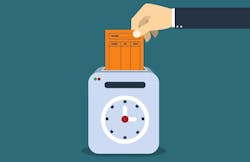The Trump administration proposed changes to the Fair Labor Standards Act that could change who is eligible for overtime pay.
The Department of Labor expects that more than 1 million salaried workers might become eligible for overtime wages if the administration’s changes are adopted.
Knowing the basics of this important labor law could save a business from costly litigation. It’s important for operators to know who’s eligible for overtime pay, so that techs and managers aren’t misclassified on the company’s payroll.
So here’s an overview of how overtime exemptions are determined, as well as what changes might be coming.
Time and a Half
The Department of Labor established overtime in 1938 with the Fair Labor Standards Act for work in excess of 40 hours in a week. That’s the “time-and-a-half” rate that most people know today.
In 1975, the government added a salary threshold—$13,000—to mark eligibility. Anyone below that threshold couldn’t be exempted from overtime pay. That figure stood until 2004, when the Bush administration lifted that threshold to $23,660 per year or $455 per week.
The Obama Administration proposed another change to that threshold, but it was defeated in a court challenge. The Trump administration’s Labor Department has now proposed its own number.
New Proposal
The Department’s current proposal is to raise overtime exemption threshold to $35,308 per year or $679 per week. That means that anyone making less than that amount should be paid overtime—even if they have managerial duties.
It’s still under review, and it’s unclear when the federal government will finalize the rule. There is some pushback from Democratic members of Congress, who argue that the Department’s proposal doesn’t extend overtime eligibility enough.
Rep. Alma Adams (D-N.C.), gave statements during a subcommittee hearing in June that the 1975 overtime exemption level made 60 percent of full-time, salaried workers eligible for overtime pay. This latest proposed revision would cover just 15 percent of those workers, Adams said.
The public comment period for the proposed change ended in June. The Department of Labor told NOLN that it will “thoroughly review the comments received during the public comment period before determining next steps.”
Two Tests Determine Eligibility
The most immediate change, if the new proposal is approved, could be to a salaried shop manager who makes more than $23,660 but less than $35,308, says Brian Farrington, an attorney who practices in labor law and works with members of the Automotive Service Association.
That person would need to be paid overtime under the new rule, because anybody below $35,308 couldn’t be made exempt.
But salary isn’t the only determination in exempting somebody from overtime pay. There are two tests: the salary test and the duties test.
“The individual in question has to meet the minimum salary requirement,” says Farrington, who is also a former investigator with the Labor Department’s Wage and Hours Division, which enforces overtime rules. “And then he or she has to have management as their primary duty.”
The administrative duties test would be the most common of the so-called “white-collar” exemptions for a quick lube, although bigger chains might have different managerial positions that qualify within a centralized office or corporate headquarters.
At an individual shop, a manager must have a lot of input in things like hiring and firing, discipline and promotions to meet the administrative test.
It’s all about the duties of the job, and that can present a grey area in smaller shops. If there’s just a manager and two employees, and the manager spends most of his or her time changing oil, then it might not meet the criteria for exemption. That’s because the duties aren’t seen as administrative.
“If he or she spends the majority of time with a wrench in hand, it might be harder to argue (for overtime exemption),” Farrington says.
It’s important to classify employees correctly. Unpaid overtime litigation is a costly endeavor, particularly if it’s the federal government on the opposite side of a court case.
The federal government has said that another benefit to raising the salary test threshold is that it clarifies things for people below that figure. Someone exempt from overtime must meet both the salary and duties test.
If a shop owner is unsure, Farrington suggests reaching out to a labor law or human resources professional for help.
If an employee requires overtime pay by law, Farrington says pay now or pay later.
“Preventative maintenance is the key in this kind of situation as well,” he says.
More on the ‘white collar’ exemption:
—
To qualify for the “white collar” overtime exemption, employees must pass a duties test that verifies that his or her position falls under the necessary requirements
The white collar exemption covers executive, professional and administrative exemptions, which each have their own duties test. According to the Department of Labor, these are the duties that need to be met by each employee to qualify.
Executive: Primary duty must be managing the enterprise, or managing a customarily recognized department or subdivision of the enterprise.
Administrative: Primary duty must be the performance of office or non-manual work directly related to the management or general business operations of the employer or the employers' customer.
Professional: Primary duty must be the performance of work requiring advanced knowledge, defined as work which is predominantly intellectual in character. The knowledge must be in a field of science or learning and the knowledge must be acquired by a prolonged course of specialized intellectual instruction.






